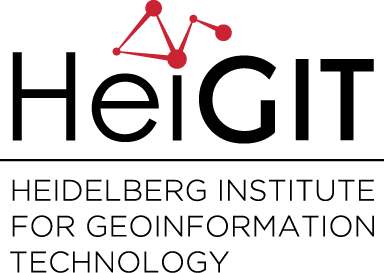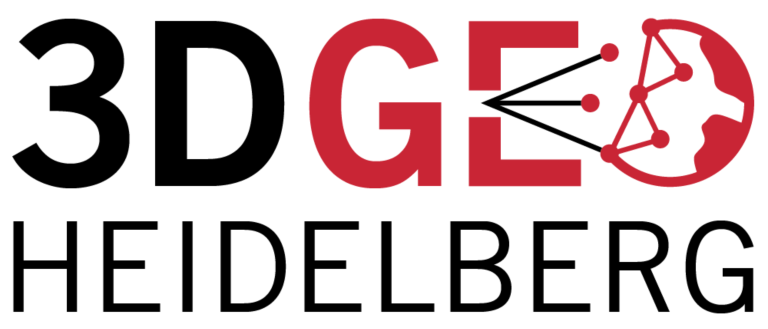Author: GIScience HD
-
Time to celebrate! oshdb has reached an object count of >10 billion!
As of 02.11.2022 we have reached objects 10,107,826,483* in our oshdb. As such, we think it is most definitely time to celebrate! *For information on the background this figure, read our Basic guide to OSM data filtering 😉 This blog post is all about reaching 10 billion objects in OpenStreetMap. For the database to aggregate such…
-
Near realtime OpenStreetMap data and stats: OSHDB and ohsome API are now updated hourly
We have exciting ohsome news! As many of you know, past OSHDB updates happened weekly and led to a delay between the data in OpenStreetMap (OSM) and our database. Basically, you had to wait up to a week to see changes in OSM reflected in the OSHDB. From this point forward, that lag is a…
-
ohsome Region of the month – Temporal OSM developments in Kyiv
Welcome back to our ohsome region of the month series! In this post, we’ll take a look at the temporal development of highways and added smoothness-information, as well as social facilities and updates on map development for Kyiv. Before we start, if you’re new to the series, make sure to check out previous installments of…
-
How to become ohsome part 14 – Advanced dashboarding
Hello again and welcome back to our “How to become ohsome” series where we demonstrate how you too can become ohsome with ohsome API! If you’re new to the series or need a refresher, check out the older installments in our series, like this or this one covering the various ways of accessing ohsome API. And now to our…
-
How to become ohsome part 13 – An ohsome way to check if OSM is up to date
At long last, welcome to another addition of our How to become ohsome-series! This one is special because we’re discussing a third-party application that uses ohsome API as back-end to accumulate historical OSM data. Although this innovation isn’t directly about our API, it’s close enough (and exciting enough) to merit inclusion and just one more opportunity for…
-
Open GIScience PostDoc positions on understanding the relationships between “Urban nature experience, biodiversity and mental health”
We call for applications to postdoctoral positions within the Heidelberg Mannheim Health and Life Science Alliance “Innovation Campus” for Inter-institutional project. The Central Institute of Mental Health (ZI), Prof. A. Meyer-Lindenberg, the GIScience Research Group at Heidelberg University (Prof. A. Zipf), the 3DGeo Group (Prof. B. Höfle); and the Department of Biodiversity and Plant Systematics…
-
ohsome Region of the Month: hiking-related tags & mountains
Welcome back to a new installment of the ohsome Region of the Month blog series! This will be part two our posts on hiking related tags and this time, we’ll investigate the connection between user activity and said tags. To do this, we’ll use mountain time as a reference area and incorporate insights from part one…
-
Understanding spatiotemporal trip purposes of urban micro-mobility from the lens of dockless e-scooter sharing
Over the last two years, we have witnessed the ever-fast growth of micro-mobility services (e.g., e-bikes and e-scooters), which brings both challenges and innovations to the traditional urban transportation systems. For example, they provide an opportunity to better address the “last mile” problem due to their convenience, flexibility and zero emission. As such, it is…
-
Audiobeitrag: Das Heidelberg Institute for Geoinformation Technology (HeiGIT) im Campus Radio
Damit Geoinformationen sicher und einfach genutzt werden können und Hilfsorganisationen bei Katastrophen bessere Orientierung haben, gibt es das HeiGIT. Unterwegs in einer fremden Stadt? Kein Problem, jedes normale Smartphone hat heute eine Satellitenverbindung. Die Routenplanung wird dabei immer besser. Dank Geoinformationen finden Rollstuhlfahrer heute niedrige Bordsteine und Hilfsorganisationen Rettungswege nach einer Katastrophe. Damit solche Daten…
-
Job Offer: Senior Science Manager — Innovation & Research Manager GIScience (m, f, d), 100%, permanent
Du willst Deine Management- und Forschungsexpertise zum Wohle der Gesellschaft und Umwelt einsetzen? Du willst HeiGIT dabei unterstützen die Verfügbarkeit und Qualität von Geodaten zu verbessern und Geoinformatik-Methoden weiterzuentwickeln, die für offene, gemeinnützige Anwendungen im Bereich Nachhaltigkeit, Mobilität und humanitäre Hilfe eingesetzt werden? Das ist unsere Mission! Die HeiGIT gGmbH ist ein forschungsorientiertes, gemeinnütziges Start-up mit…
-
Leveraging OpenStreetMap and Multimodal Remote Sensing Data with Joint Deep Learning for Wastewater Treatment Plants Detection
Humans rely on clean water for their health, well-being, and various socio-economic activities. During the past few years, the COVID-19 pandemic has been a constant reminder of about the importance of hygiene and sanitation for public health. The most common approach to securing clean water supplies for this purpose is via wastewater treatment. To date,…
-
HGG Vortrag: Heute: Erneuerbare Energien als Entwicklungschance? Deutschland und Kenia im Vergleich. Prof. Klage, 17.05., 19:15 Uhr
Hiermit möchte wir Sie herzlich zum HGG Vortrag von Prof. Dr. Britta Klagge (Universität Bonn) zum Thema “Erneuerbare Energien als Entwicklungschance? Deutschland und Kenia im Vergleich” einladen. Der Vortrag findet am Dienstag (17.05.2022) um 19:15 Uhr im kleinen Hörsaal des KIPs (INF 227) der Universität Heidelberg statt. hgg.urz.uni-heidelberg.de Der zunehmende Einsatz erneuerbarer Energien geht mit…


